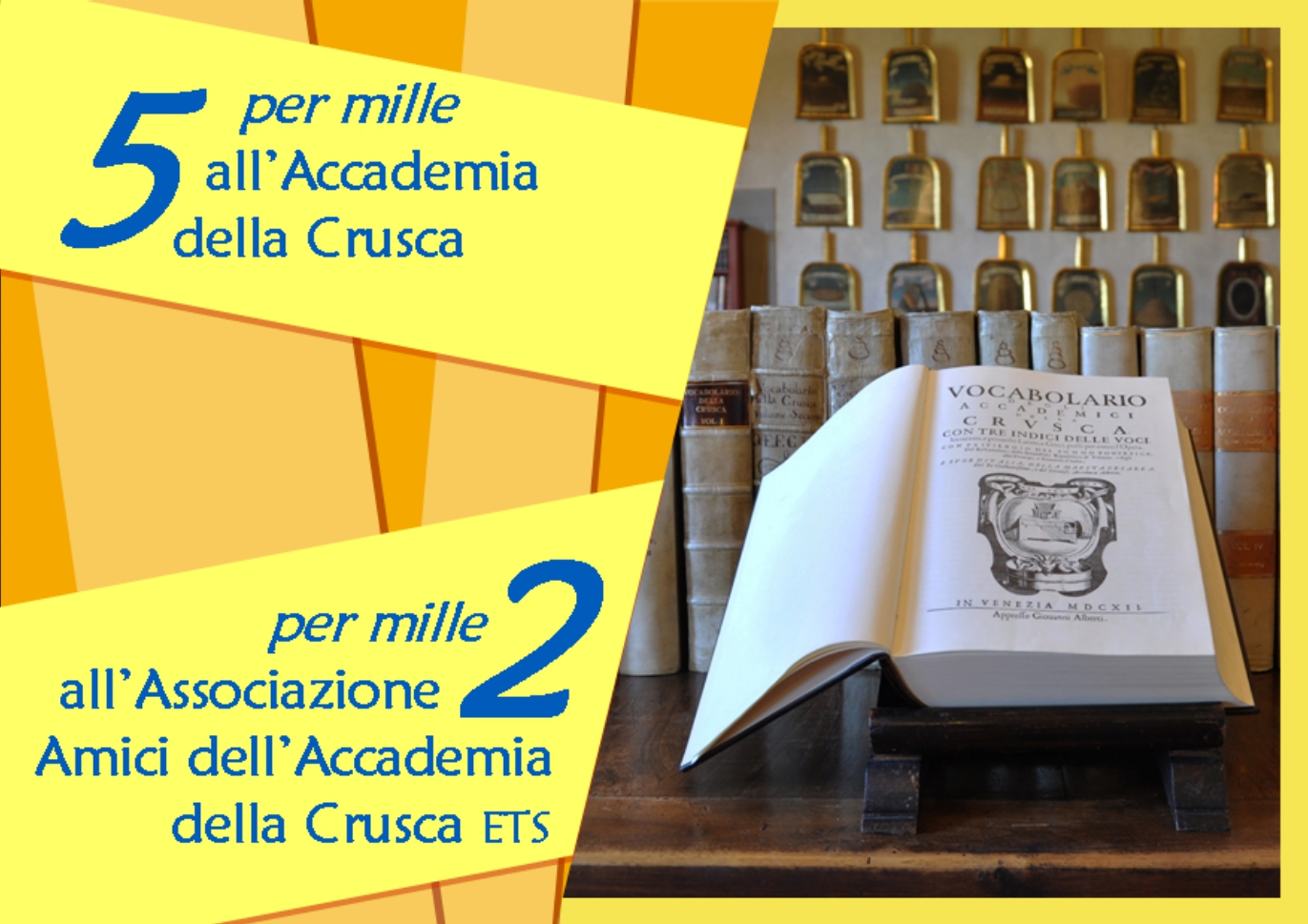Editorial logos of the Accademia
Editorial logos of the Accademia
It is well known that the editorial logo of the Accademia della Crusca is the frullone or buratto (in English, sifter) - the vessel used to separate the flour from the bran, clearly referring to the commitment of the Accademia to separate the good language from the bad, according to the definition abburattar che fa essa accademia nel cernere la farina dalla crusca, given by Bastiano de' Rossi, named Inferigno, in 1585. This emblem, still used today on the title page of books printed by the Accademia, is considered an editorial logo, having been used by the printers that worked for the Accademia until the Accademia could do its own printing.
However, it is certainly less widely known that the very first books printed by the Accademia, those published between 1583 and 1584, carried another symbol on their title page, traces of which remained also in publications from a few decades later. For these first works, the Academicians relied upon the Florentine printer Domenico Manzani, who had as his own editorial logo a she-cat: the cooperation between the Accademia and Manzani led also to the mixing of their logos, giving birth to the logo of the she-cat operating the wheel of the frullone. The various stages of this mixing of logos are visible in the 1595 edition of the Divine Comedy, printed by Manzani, which carries the traditional Frullone of the Accademia on its title page but frequently recalls the image of the she-cat elsewhere: at the end of the first cantica, there is a she-cat walking at the bottom of the page; the title Purgatorio at the beginning of the second cantica is framed with a decoration representing two she-cats clinging on to the drapes of the frame; finally, the last pages carry the images of Manzani’s editorial logo of the she-cat as well as the personalized one of the she-cat operating the frullone.
Another printmaker who helped the Crusca at the end of the sixteenth century was Giuseppe Padovani, whose signature we find on a title page from 1588 accompanied by a very small logo of the buratto, a coincidence which led people to believe that the buratto was Padovani’s own editorial logo, while it was later proven that his logo was an eagle with open wings resting its claws on a book.
The first publication of the Accademia to carry the emblem of the buratto on its tite page (but without the motto) was a work by Salviati entitled Degli Accademici della Crusca, difesa dell'Orlando Furioso dell'Ariosto contra 'l dialogo dell'epica poesia di Camillo Pellegrino. Stacciata prima. In Firenze, per Domenico Manzani stampator della Crusca, 1584 (Zannoni, 1848, p. 6 n.16).
Before that, Salviati had written a short work entitled Paradosso, whose complete title was: Il Lasca, dialogo. Cruscata, ovver Paradosso d'Ormannozzo Rigogoli, rivisto e ampliato da Panico Granacci, cittadini di Firenze e Accademici della Crusca, nel quale si mostra che non importa che la storia sia vera, e quistionarsi per incidenza alcuna cosa contra la Poesia (Zannoni, 1848, p. 4). We do not know if the editorial logo on it was the she-cat or not.
Attività
Protocollo di intesa Accademia della Crusca / Ufficio Scolastico Regionale della Toscana / Società Dante Alighieri
L'Accademia della Crusca e la questione del genere nella lingua
Le iniziative dell'Accademia per il 2021, anno dantesco
Agenda eventi
Evento di Crusca
Collaborazione di Crusca
Evento esterno
Avvisi
Non ci sono avvisi da mostrare.


